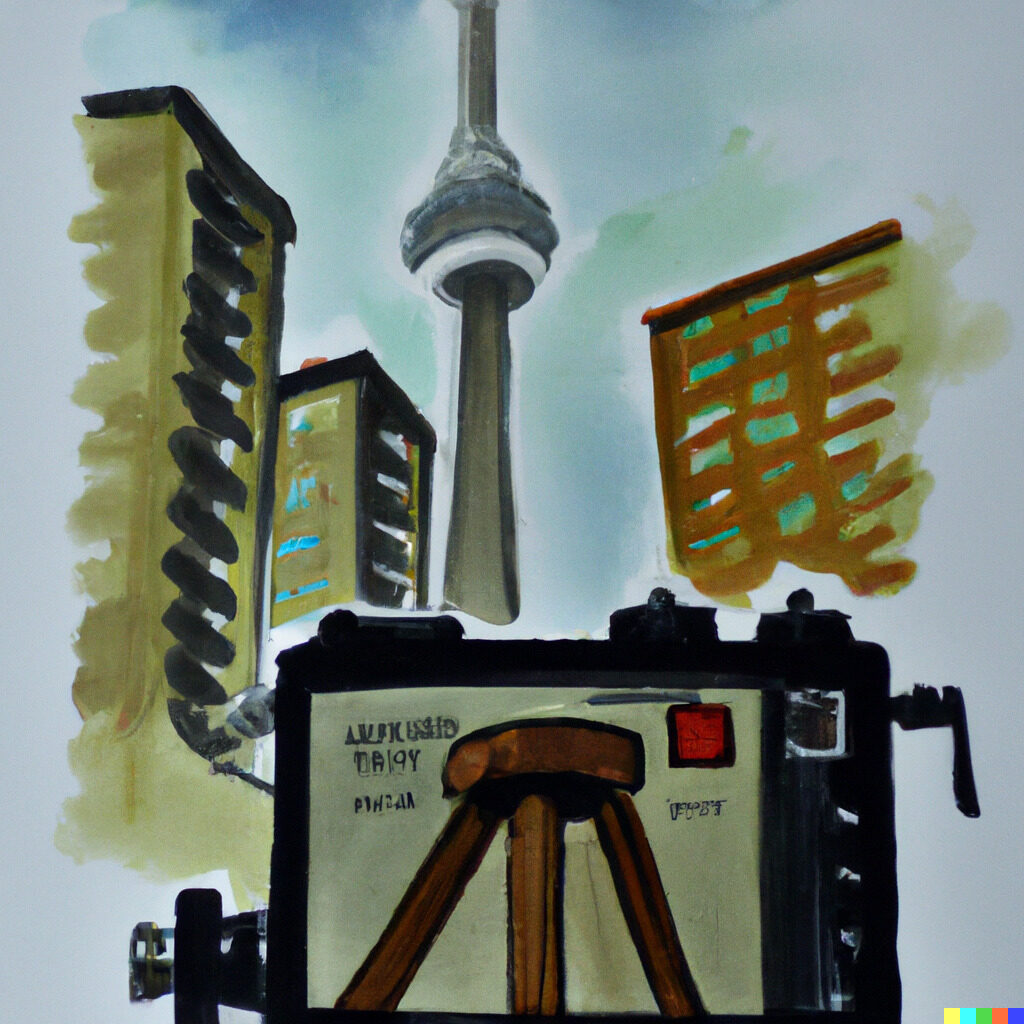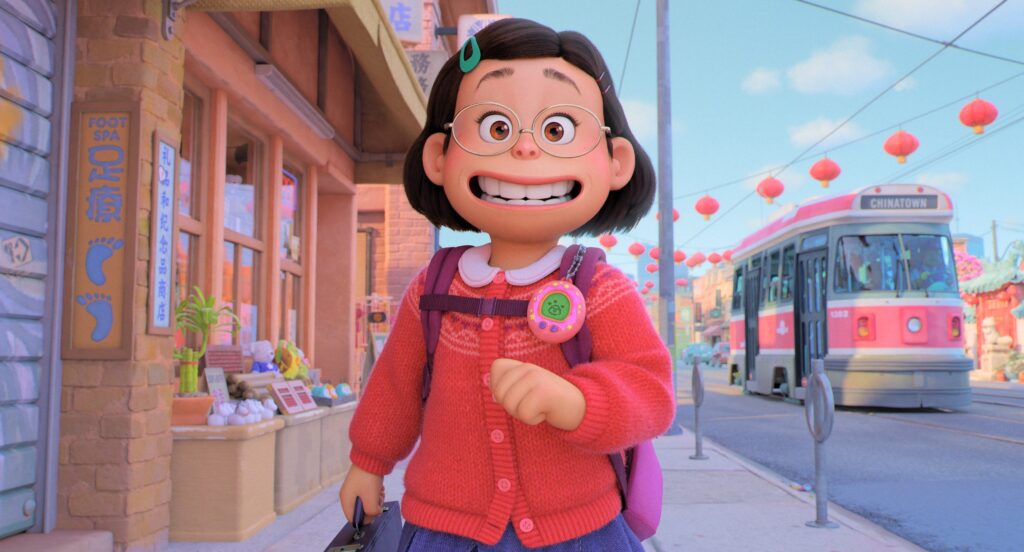The Hulk has just emerged on a street in Harlem, New York. He roars defiantly at the villain of the film, Emil Blonsky, also known as the Abomination, a monster equal to the Hulk.
By Julian Arwen
The pair charge at each other in an epic confrontation and they leap in the air to collide — only for the Abomination to tackle the Hulk, landing and tossing him back over 60 feet in a prodigious display of strength. But, when Abomination slams into the hulk, he passes vibrant signs for a record store and an adults-only club.
To the average film-goer outside of Canada or even just Toronto, it’s an inconsequential detail. Just another part of the setting to be ignored or smashed by the goliaths on screen. Anyone living in Toronto however, especially citizens who are older than 19, would’ve immediately recognized the two locations. Sam’s Record Store, a now-defunct record and video store with an iconic sign, and Zanzibar, an “adults only” club. The battle in ‘Harlem’ was actually Yonge St. in Toronto.
This is a regular occurrence for Toronto to be a filming location for another set. DC Comics’ 2016 film “Suicide Squad” had Toronto become the backdrop for both Central City and Gotham City. Numerous Resident Evil films have been shot in the city. In fact there are 13 different productions currently being worked on in the city, among them the television show Titans’ fourth season.
One thing that all of these productions mostly share is their lack of Toronto as the actual setting for the production — yet the location is used for other story settings. This begs the question, why not here? Always the set dressing, hardly the setting.
“I think that’s a big selling point, too, for productions coming up here because it can be sold as Chicago
or New York.”
– Kris Siddiqi
The short answer to why: money. A stupendous amount of money. The hows and whys are broader and more layered and worth exploring.
That’s not to say there are no shows or movies set in Toronto as well as filmed. The Canadian comedy troupe Kids in the Hall produced their film “Kids in the Hall: Brain Candy” in the city.
This was an exclusively Canadian production, however.
Nadine Finley, Humber College’s Interpretive Center Lecture Grounds Curator, says, filming on locations in big American cities costs an arm and a leg for production companies.
“I think more cities would be very expensive,” says Finley. “If you were filming something in New York about New York, it’ll probably be much more expensive than compared to those American film companies coming up to Canada. It also depends on where your media is being consumed.”
Toronto has the unique talent of looking completely different depending on where you are. Each neighbourhood feels more like a different town rather than part of one big collective city, resulting in a myriad of looks and feels. This results in a Toronto that lends itself to a colourful variety of looks, one that actor and comedian Kris Siddiqi agrees with.
“I think that’s a big selling point, too, for productions coming up here because it can be sold as Chicago or New York,” Siddiqi says. “I remember, even in the 80s, one of the Police Academy movies was filmed here, or like, Short Circuit too was filmed here. And it was supposed to be New York, I think it just lends itself to being able to be looked [at ] and dressed as a different city.”
Aurora Browne, Canadian writer, actor, producer, and wife to Kris Siddiqi, says, that having worked in the Canadian television industry creating shows like Baroness von Sketch, understands this predicament but says that the benefits of filming in Canada can outweigh the negatives.
“When you combine those tax credits that Canada gives with the dollar difference, it means that crews can come up here from the U.S. and they get the same language, really similar cars and culture,” says Browne. “But with a city that is pretty flexible, it can be made to look like a lot of things.”
Additional money in tax credits is an eye-catching prospect to any film or television production and any increase or decrease in percentage can mean more or fewer production environments. According to the Ontario Creates website and the Ontario Government website, Ontario has something called the Ontario Film & Television Tax Credit (OFTTC).

A production can claim a credit equal to 40 per cent of labour expenditures if it’s a first-time production or 35 per cent if it’s other than a first-time production. For comparison, according to the official website of the State of New York, productions can claim a credit equal to 25 per cent of production costs, which is 10 per cent less than Ontario.
A major underlying concern when filming material about and or within Canada, is how strange or peculiar it could. Even when producing a show set and filmed in the city of Toronto itself, Aurora Browne was still caught up by her producer’s concern about how “Canadian” the show is.
“We had to have a lot of discussions with our producer about how Canadian [we could] be,” says Browne. “Like, could we show that it was Toronto because his position from being in a whole bunch of rooms with networks in the U.S. when he’s trying to sell shows that if you mentioned Canada or their things that are just too strange for the United States audience, they just won’t watch? We were told we had to change the name of a drink because nobody would have heard of that drink.”
A possible way to correct this is to use more well-established Toronto scenery and material made in the city. The city of Toronto is full of recognizable landmarks and buildings that would make Toronto far more than simply another actor that is itself playing a role. Such is the suggestion of Finley.
“Using the landscape, more for these types of things I think would be fantastic to give Toronto better recognition, both visibly as the city itself, instead of taking the form of whatever city you slap the, you know, the street sign of on top of the Toronto sign,” says Finley.
For that to happen, Finley suggests, “having more support for Toronto-based filmmakers who use the city as the city itself.”
Recently, Toronto has gained more notoriety on the media stage with recent films and television productions, such as “Schitt’s Creek” and the Pixar film “Turning Red.”

Both Siddiqi and Browne joke however that Turning Red is not a true “Toronto” story due to its lack of Racoons. Perhaps it’s a missed opportunity given the red panda connection. However, one thing they both agree on is that one way for the city to gain more attention is for a bigger tentpole production to be predominantly set here in Hogtown.
“I think it has to be a major motion Hollywood picture that’s set here,” says Siddiqi. “And that’s not to say that it needs to be a superhero movie or whatever. But I think even if it’s an action movie… The man from Toronto, it wasn’t a really big action movie. But I think of things like Die Hard was set in LA and you didn’t even see a lot of the movie you just knew [it was] there.”
“I always think in my head, you know, Toronto is so ripe for an action movie to be set here. We have so many things, we have the dock standing by the water, we have the train yards and the stockyards,” Siddiqi says.
Whatever it ends up being, there are still a lot of stories still waiting to be told about Toronto. There is an image that permeates its varied and colourful streets; a song and a vision that tells of its own unique city culture. The city has a voice,.All it needs is the megaphone required to let everyone hear it.
